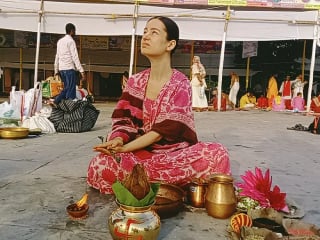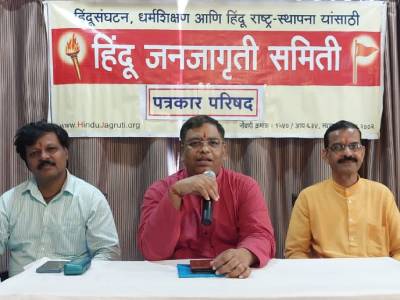 How many know that Saraswati, originally the personification of a river by the same name, is worshipped in pools of water in Japan. Such an exploration of Indian culture deeply rooted in Japanese society is now being attempted though a photographic exhibition, ‘Indian Deities Worshipped in Japan’, set to begin at the Japan Foundation here from September 3.
How many know that Saraswati, originally the personification of a river by the same name, is worshipped in pools of water in Japan. Such an exploration of Indian culture deeply rooted in Japanese society is now being attempted though a photographic exhibition, ‘Indian Deities Worshipped in Japan’, set to begin at the Japan Foundation here from September 3.
Photographs, which depict the primitive Indian traditions being followed in Japan, taken by photographer and historian Benoy K Behl, who has specialized in the study of ancient Indian cultures, are being showcased.
“In many ways, I find that Japan has preserved ancient Indian traditions, even when they may have changed here in India. For instance, in Japan, Saraswati is depicted and venerated not only with the Veena, but also remembered for her association with water. One may recall that Saraswati is originally the personification of the river by that name. Therefore, she is also worshipped in pools of water in Japan,” says Behl who visited Japan through a fellowship from the foundation.

Many deities such as Vayu and Varuna forgotten in India over the ages are still worshiped in Japan. Apart from Indian deities, Sankrit language is also well preserved in the Shinto and Buddhist dominated country.
According to Behl, the 6th century Siddham script is preserved in Japan, though it is not being used in India. “Beejaksharas’ of Sanskrit in this script are regarded as holy and are given great importance. Each deity has a ‘Beejakshara’ and these are venerated by the people, even though most of them cannot read it,” says Behl.
Many words in the Japanese language are from Sanskrit and it was also the basis for the formation of the Japanese alphabet ‘Kana’. In the supermarkets, a major brand of milk products is called ‘Sujata’. The company personnel are taught the story of Sujata who gave sweet rice milk to the Buddha, with which he broke his period of austerity, before he gained Nirvana.
The photographic show is set to conclude on September 12.
Source : India Today





